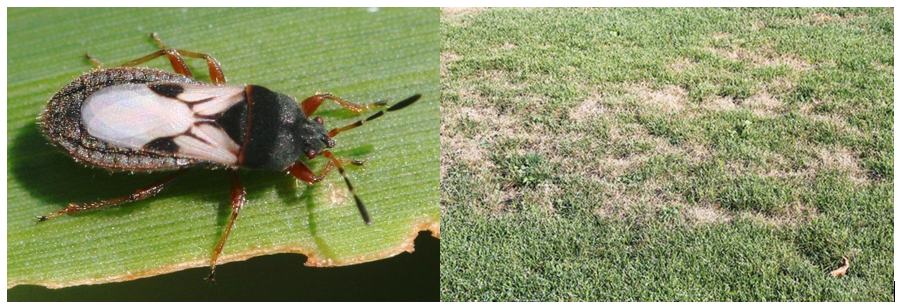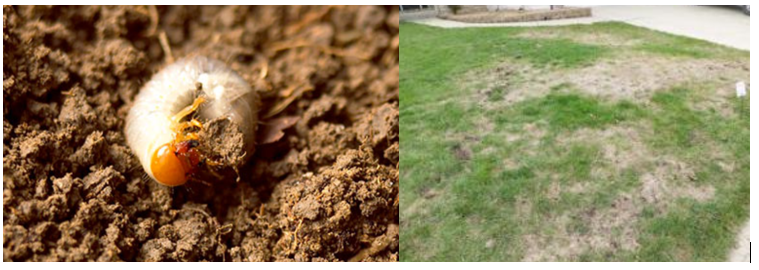Contrary to popular belief, not all bugs are bad bugs! In fact, there are TONS of beneficial insects for your lawn. Healthy lawns are actually packed with a wide variety of insects–those that you can see, and many that you never will. These insects serve as tiny little grass protectors, helping to fend off invasive and damaging pests, and promoting a living, breathing lawn ecosystem.
But, there are several types of insects that, if left uncontrolled, may cause significant damage to your beautiful grass. We’ve shown some of these below, and provided some tips on how to identify these, but as always, feel free to reach out if you suspect certain insects are harming your grass.
Chinch Bugs

Chinch bugs typically like hot, dry conditions, basically using your grass as tiny little water taps. As they rob your grass of its valuable moisture in the summer heat, large brown patches–often with clear “boundaries”–will quickly emerge as the grass dies off. Chinch bugs reproduce very quickly, and in very large numbers, so acting quickly is very important!

Grubs

Grubs are one of the more easily-identified lawn pests due to their distinct white, curled-up appearance (like a letter “C”). But, grubs are actually the larval form of several different beetles, including Japanese beetles, “June” beetles, and chafer beetles.
When grubs are active in your lawn, you can usually find them a few inches down into the soil, right where your grass’ roots are. In fact, that’s where they love to be–grubs love to eat grass roots! Although grubs are typically inactive during the winter months, younger grubs have a big appetite during the Summer and Fall months, where they do the most damage (grubs will feed in the Spring when they “wake up”, but typically much of the damage done is seen in the Fall).
Some of the symptoms of grub activity? Spongy soil, random dead/brown patches that do not green up, and birds/skunks/moles digging into your lawn (looking for snacks!). One way to confirm you have grubs is to pull back a section of your grass. If it peels up like carpet and/or you see numerous small/white grubs underneath, you may need to treat for grubs. Typically, fewer than ~5 grubs per square foot is not a problem for healthy lawns, but more than 6-10 per square foot could result in significant damage over time.
Stay tuned for Parts 2 and 3 of this blog series for additional bug identification, as well as tips and tricks for getting rid of unwanted pests!


